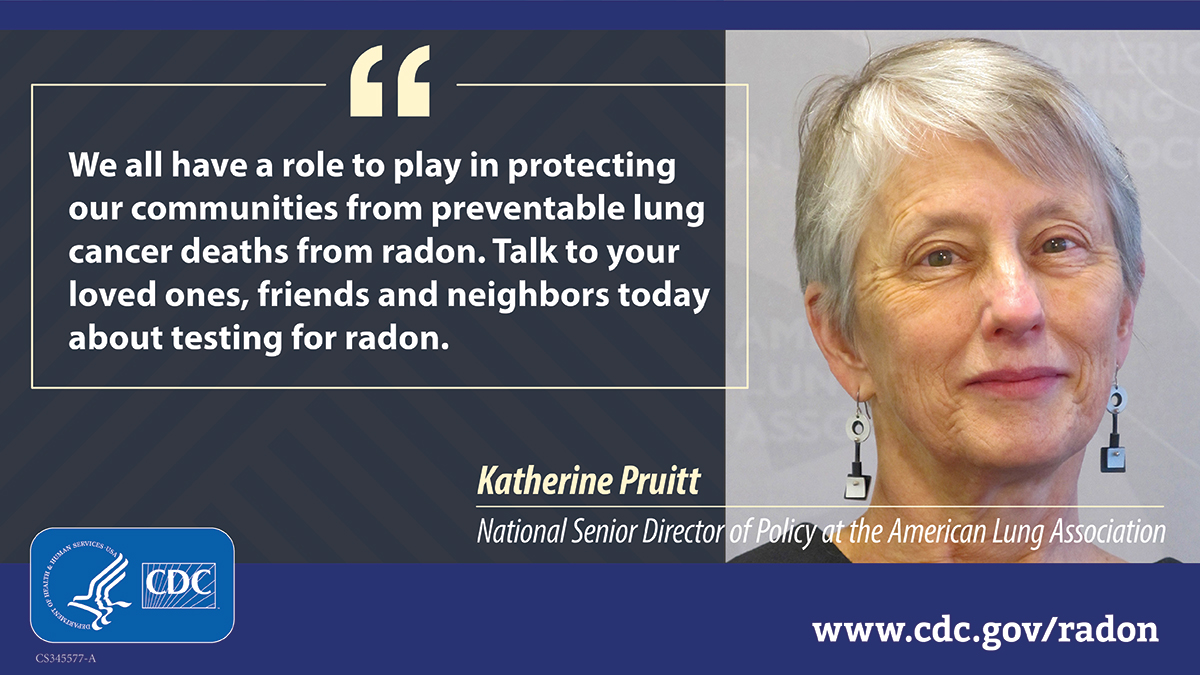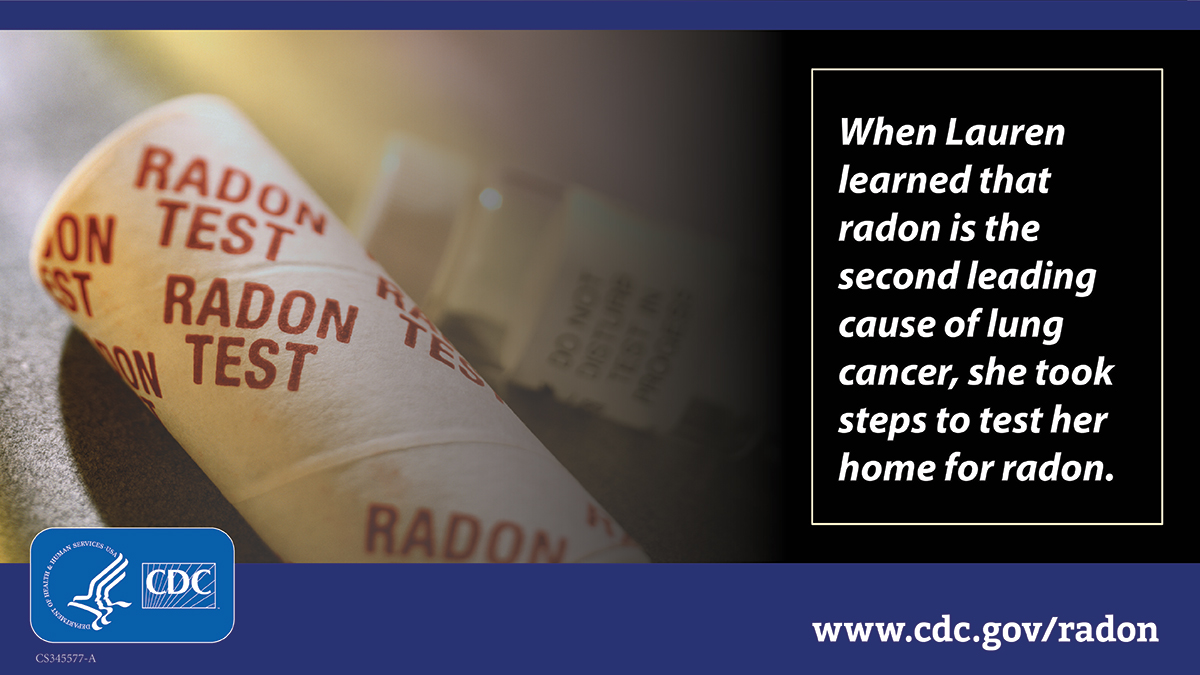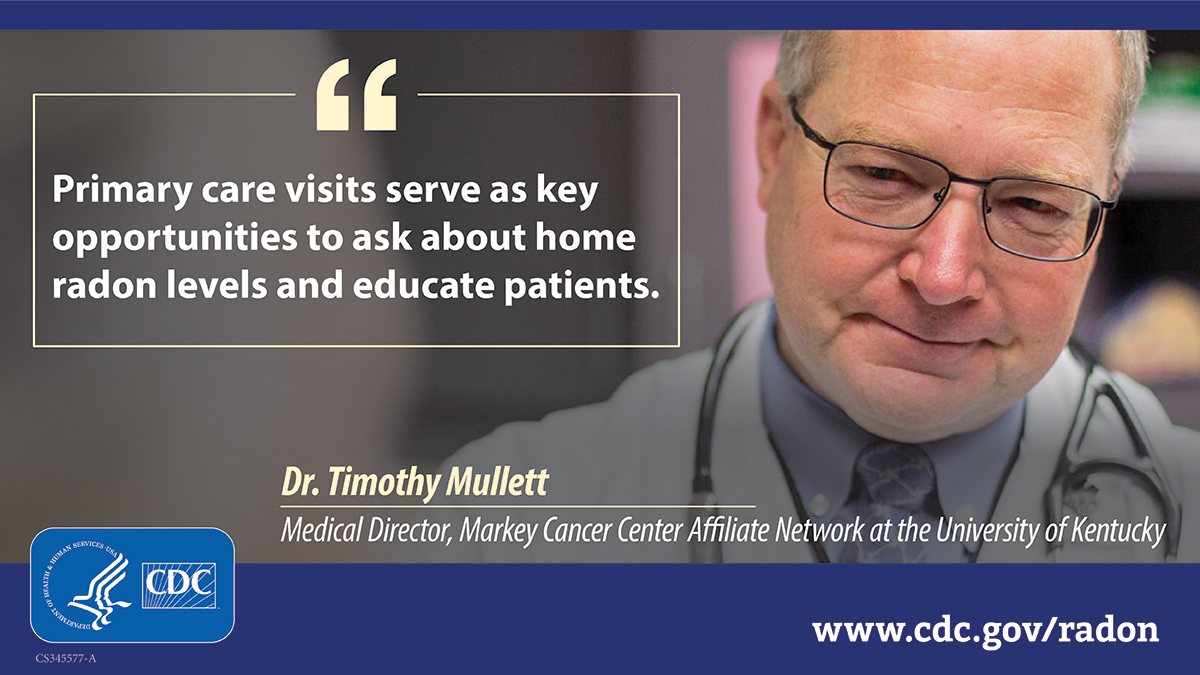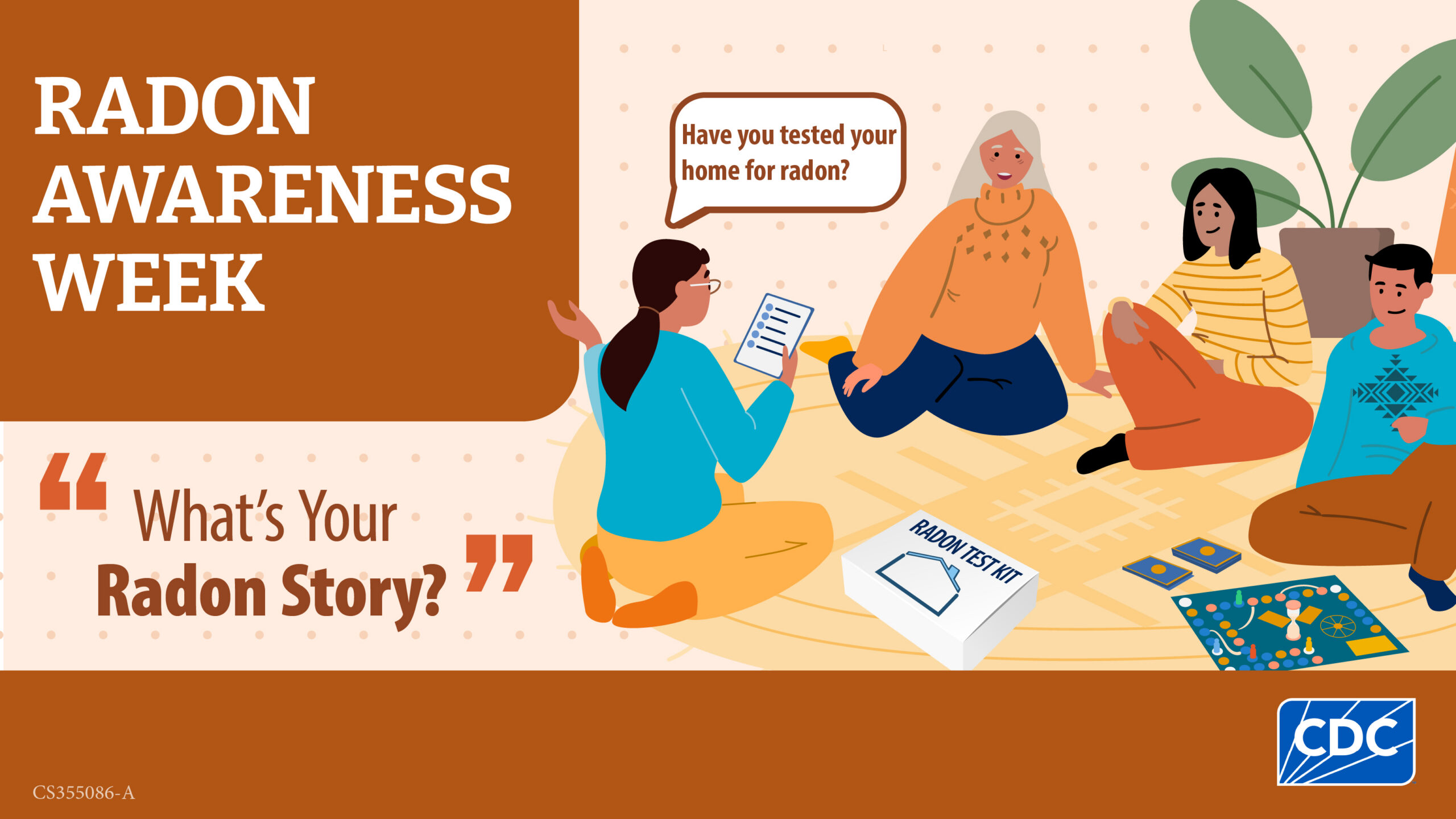At a glance
Below you can find social media resources including messages and graphics.
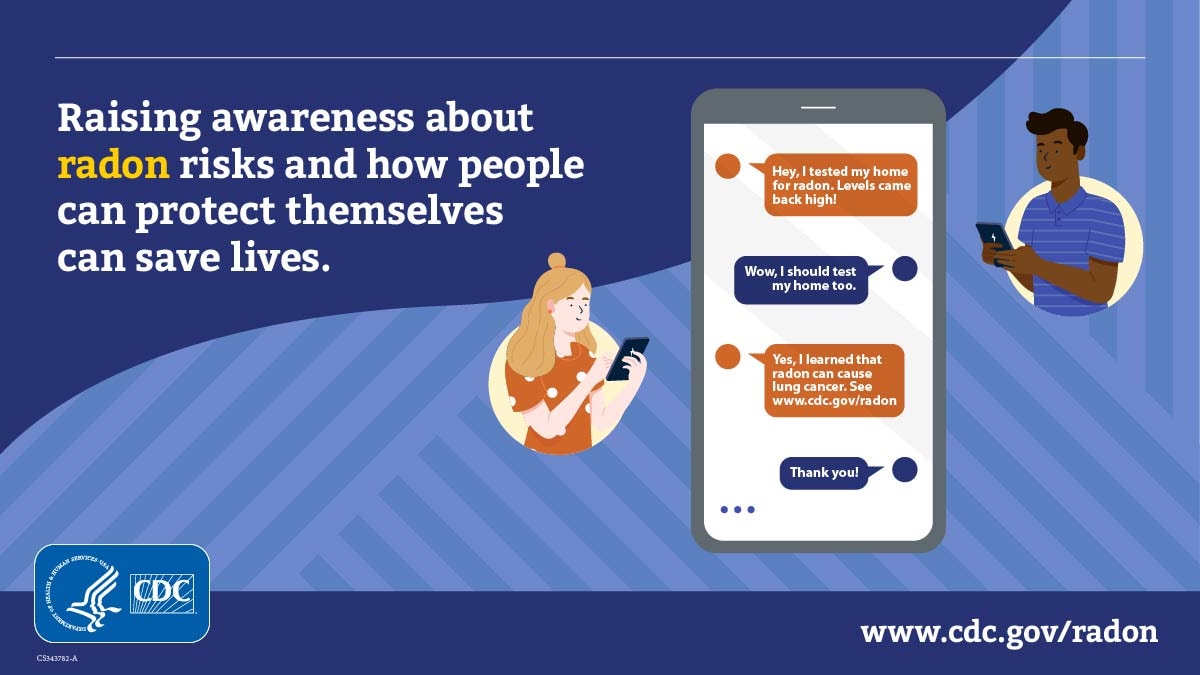
Usage guidance
These resources can be downloaded or printed. The content can be used for X (Twitter) and Facebook posts. Each theme features facts about radon with related graphics, social media messages, and highlighted radon story.
Resources
Who is affected by radon?
Facebook:
Anyone can get lung cancer from breathing in high levels of radon over time. Radon is an odorless, invisible, radioactive gas that can build up in homes and buildings putting people at risk. Learn how to protect yourself: https://bit.ly/4j4dI1I.
X:
Anyone can get lung cancer from breathing in high levels of #radon over time. Radon is a gas that can build up in homes and buildings putting people at risk. Learn how to protect yourself: https://bit.ly/4j4dI1I.
Singing has always been a big part of Jackie's life. But without knowing it, Jackie was exposed to #radon for years and got lung cancer. Today, she continues using her voice to sing and raise awareness about radon and lung cancer. https://bit.ly/4gMyDnK
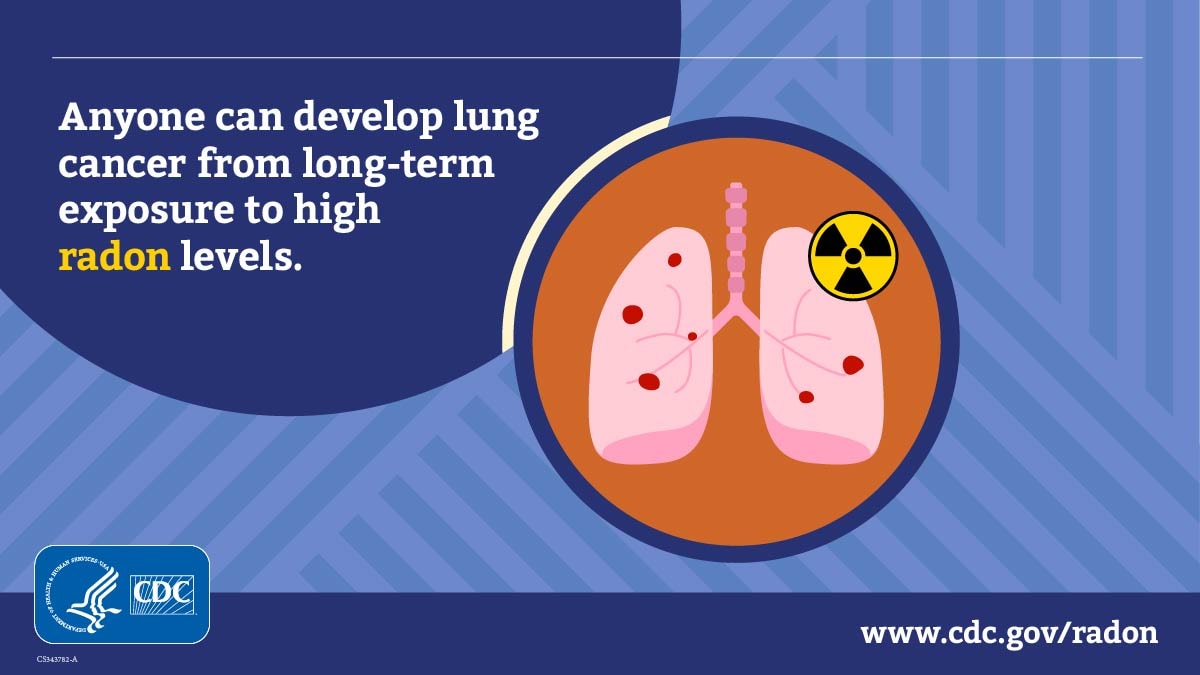
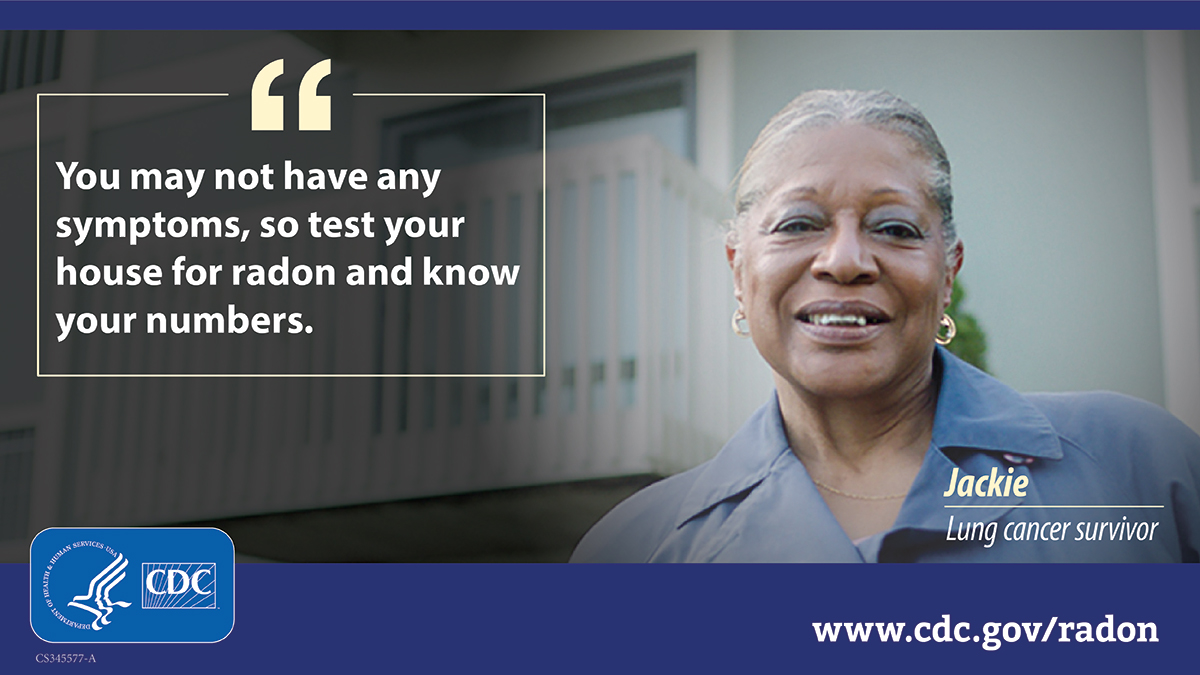
What are the health effects of radon?
Facebook:
Radon is the second leading cause of lung cancer deaths after cigarette smoking. The U.S. Environmental Protection Agency estimates that radon causes about 21,000 lung cancer deaths in the U.S. every year. Radon is a natural gas in outdoor air that can build up inside your home. Take action to reduce radon levels and talk to your doctor about any concerns. https://bit.ly/2S9itPT
X:
Radon is a radioactive gas that can build up inside your home. @EPA estimates that #radon causes about 21,000 lung cancer deaths in the U.S. each year. Take action to reduce radon levels and talk to your doctor about any concerns. https://bit.ly/2S9itPT
#DYK? Anyone can develop lung cancer from long-term exposure to high #radon levels. Read the story of Lindi Campbell, who was diagnosed with lung cancer and later discovered high #radon levels in her home. https://bit.ly/49Rwh51
Doctors: Ask your patients about home radon levels and talk to them about how radon affects lung cancer. Visit the CDC's website for more #radon information for healthcare providers: https://bit.ly/40b3AwA.
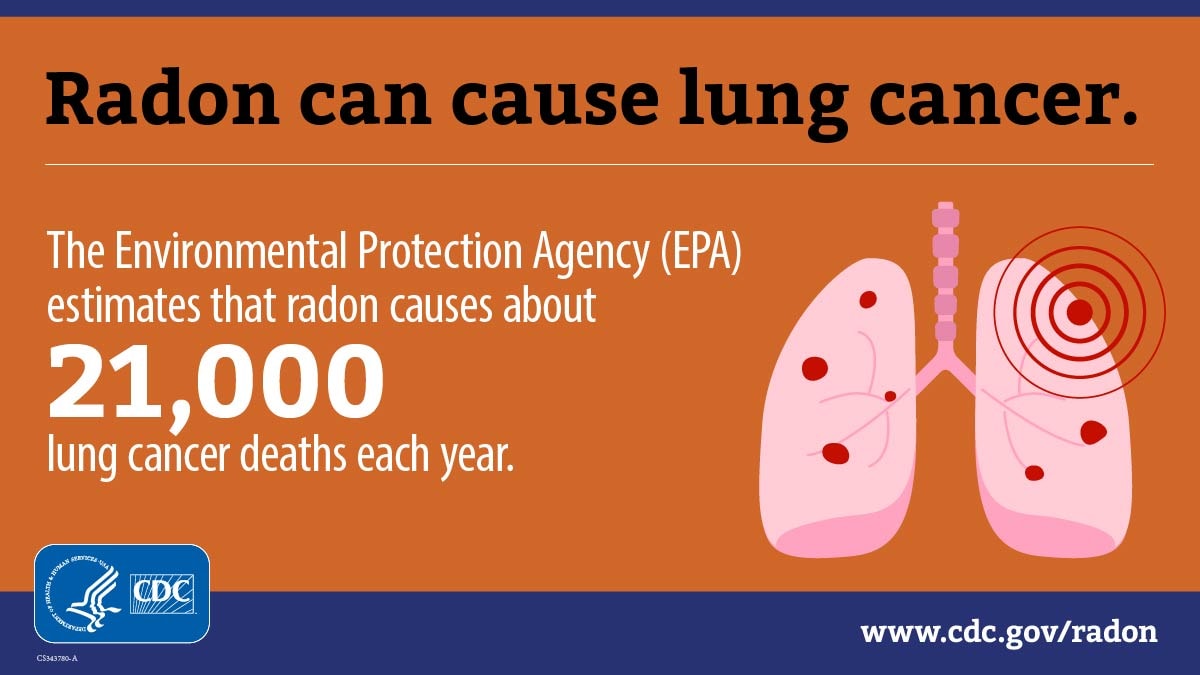
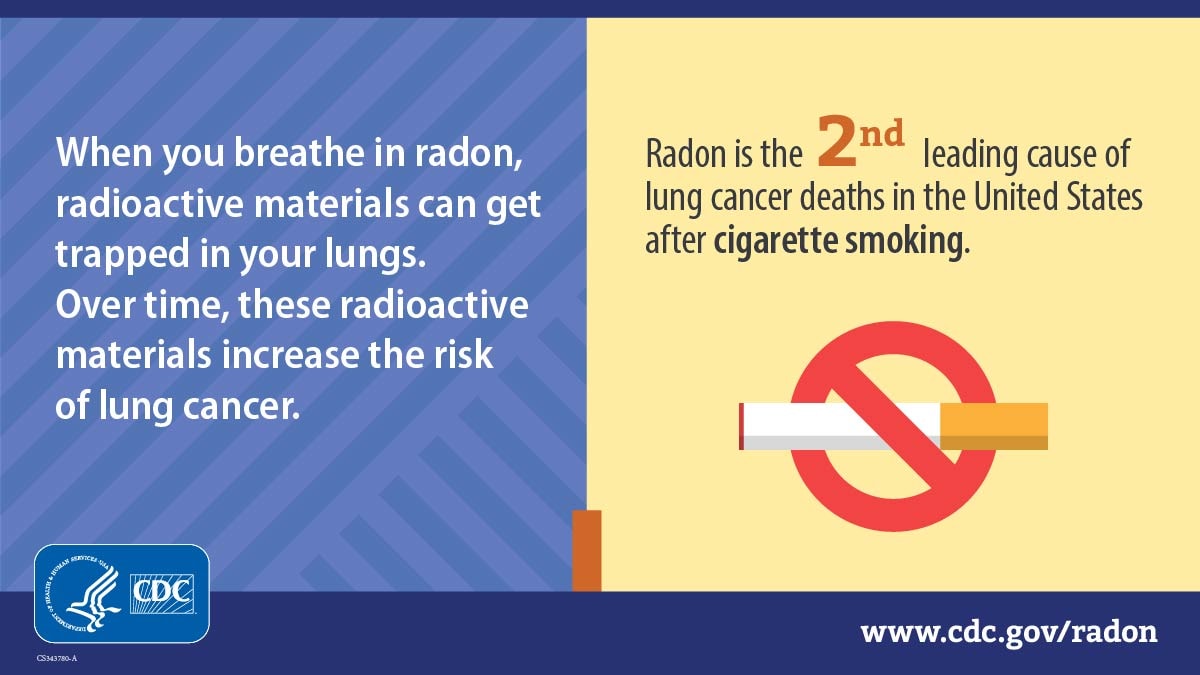
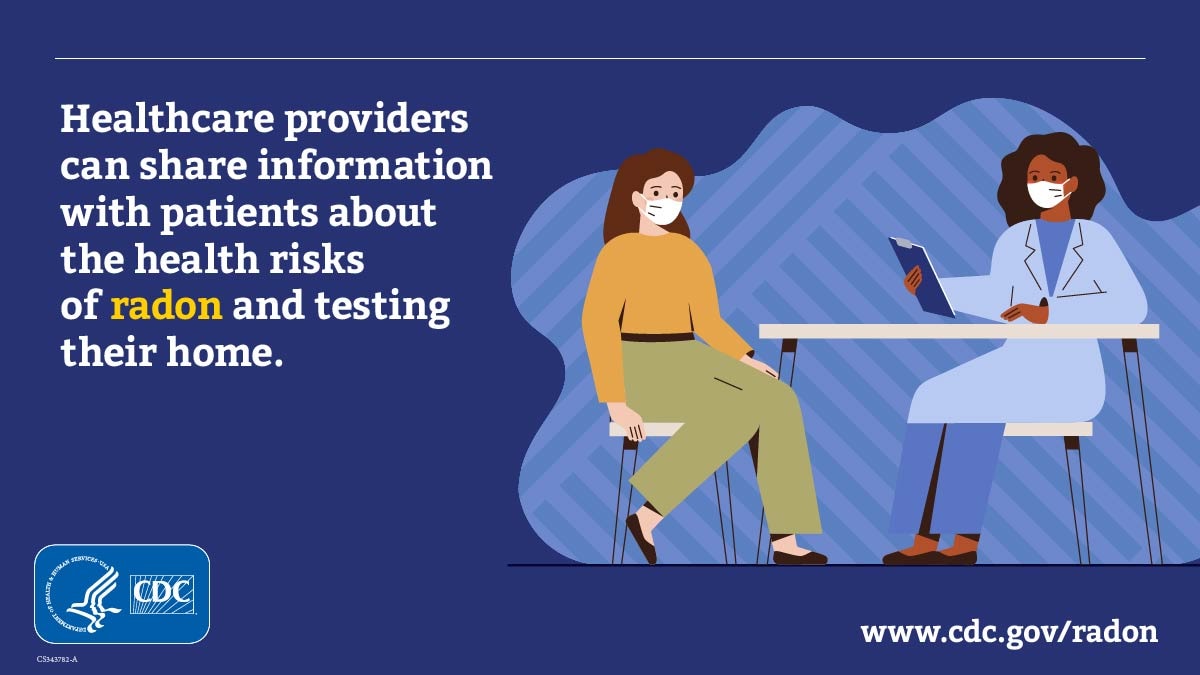
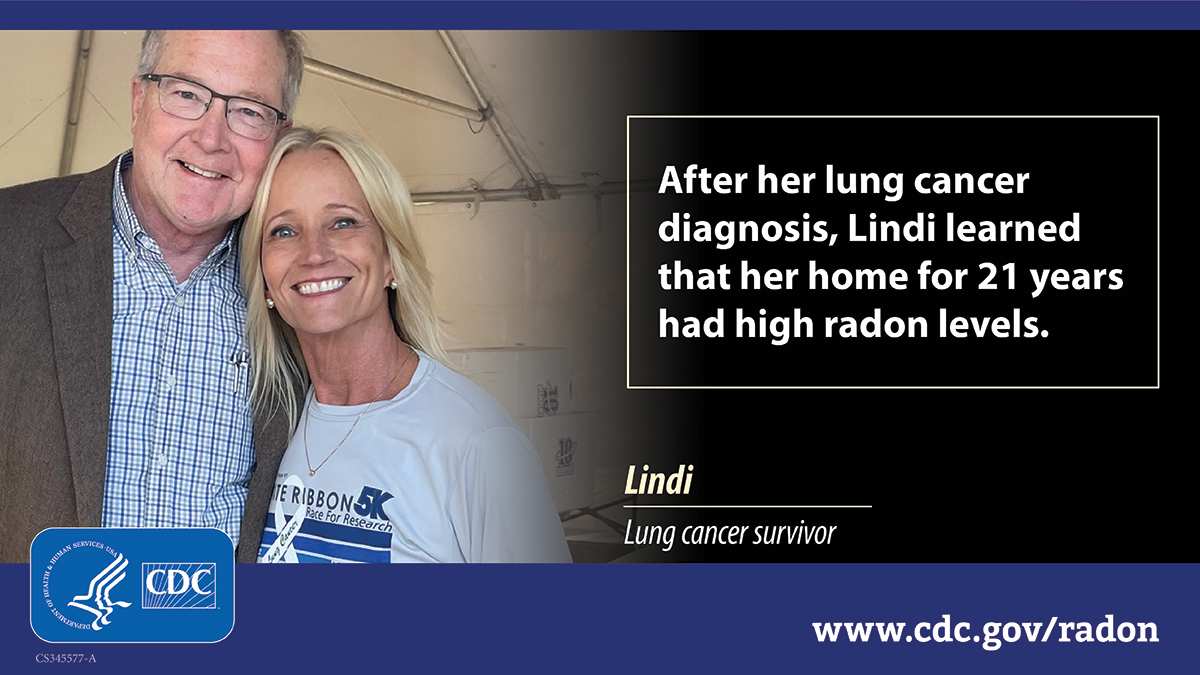
Where can I be exposed to radon?
Facebook:
All outdoor and indoor air has some radon in it. Radon can build up in the air in any home or building whether it has a basement, is sealed or drafty, or is new or old. It is a risk anywhere in the country. There is no known safe level of radon, and you should always aim to have the lowest level. https://bit.ly/3DHjEgE
X:
Radon can build up in any home or building whether it has a basement, is sealed or drafty, or is new or old. High radon levels can cause lung cancer. There is no known safe level of #radon. Always aim to have the lowest level. https://bit.ly/4j4dI1I
Tracking programs across the U.S. use #radon data to inform public health planning, leading to healthier communities! Visit the @CDC_EPHTracking website to explore radon data and learn how the data can help improve health outcomes: https://bit.ly/49T5oO4
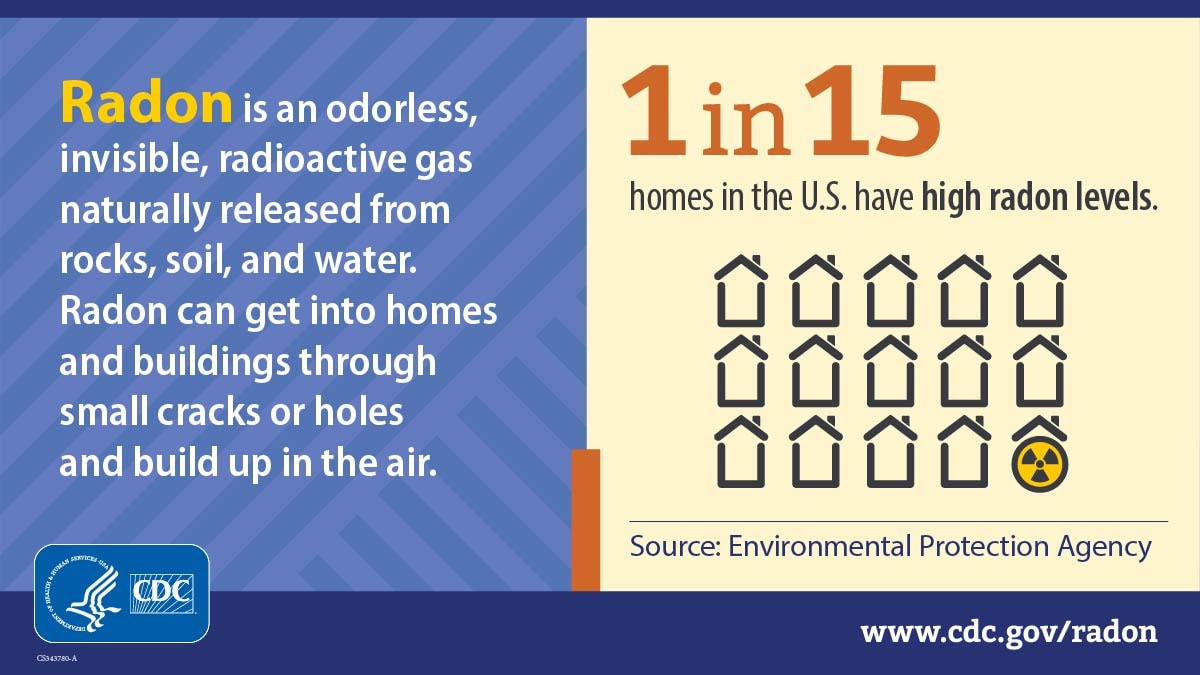
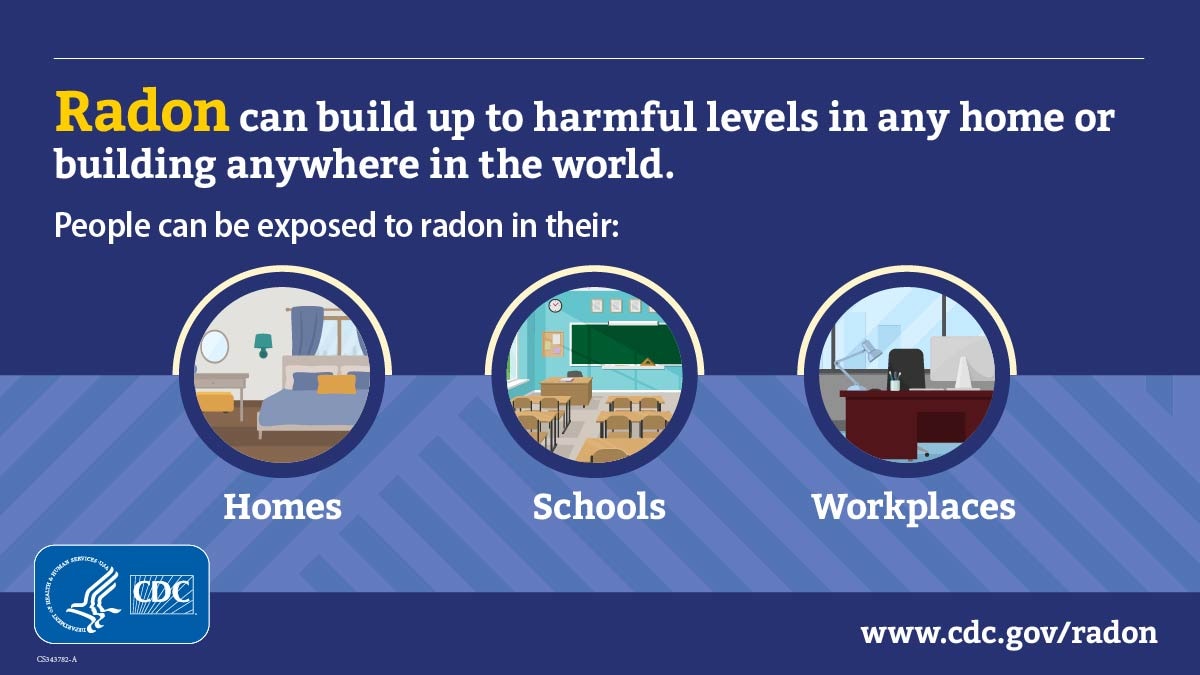
When should I install a radon reduction system?
Facebook:
Test your home to find out if you should install a radon reduction system to protect your household from lung cancer. The U.S. Environmental Protection Agency recommends installing a radon reduction system for levels 4 pCi/L or higher. Contact your state radon office to find a radon reduction professional. https://bit.ly/40aLQBs
X:
Test your home to find out if you should install a #radon reduction system to protect your household from lung cancer. @EPA recommends installing a radon reduction system for levels 4 pCi/L or higher. https://bit.ly/40aLQBs
Carol tested her home for #radon after home renovations. She was surprised—her home's radon level was high! With the help of a professional, Carol took steps to prevent radon from entering her home. Read Carol's story: https://bit.ly/3ZLg3Wo.
Radon is invisible and odorless. Testing your home is the only way to know if you're being exposed to high levels of #radon. Learn about Lauren's experience testing her home and installing a radon reduction system: https://bit.ly/3PaFDiL.

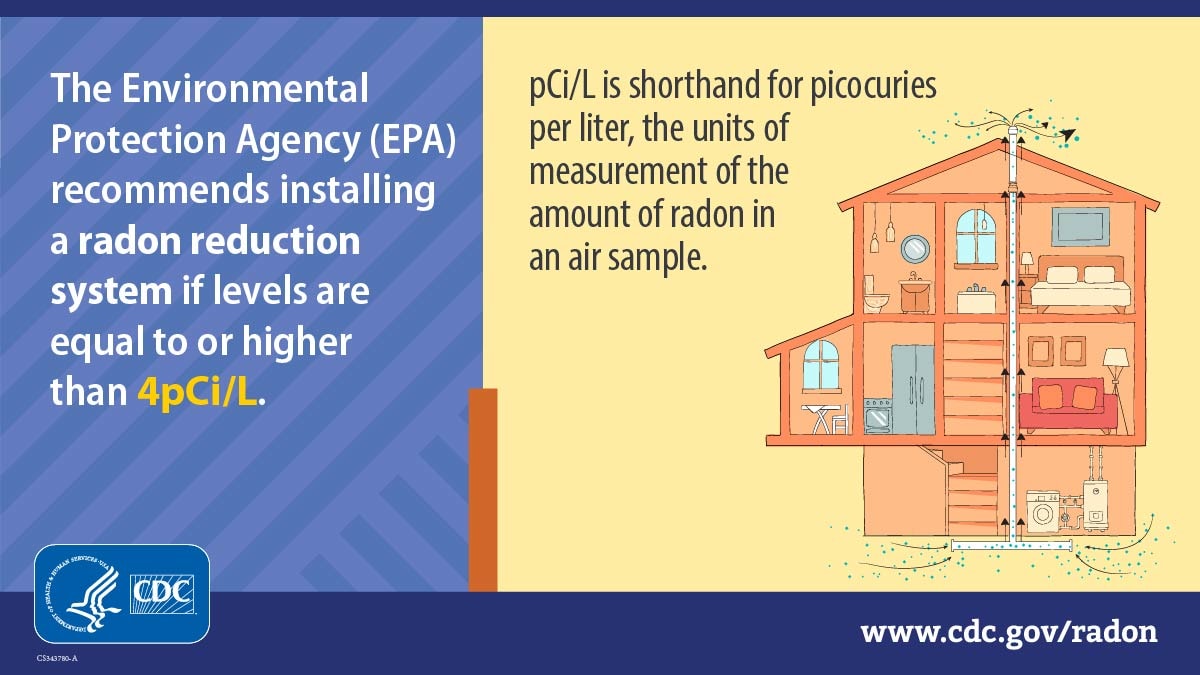
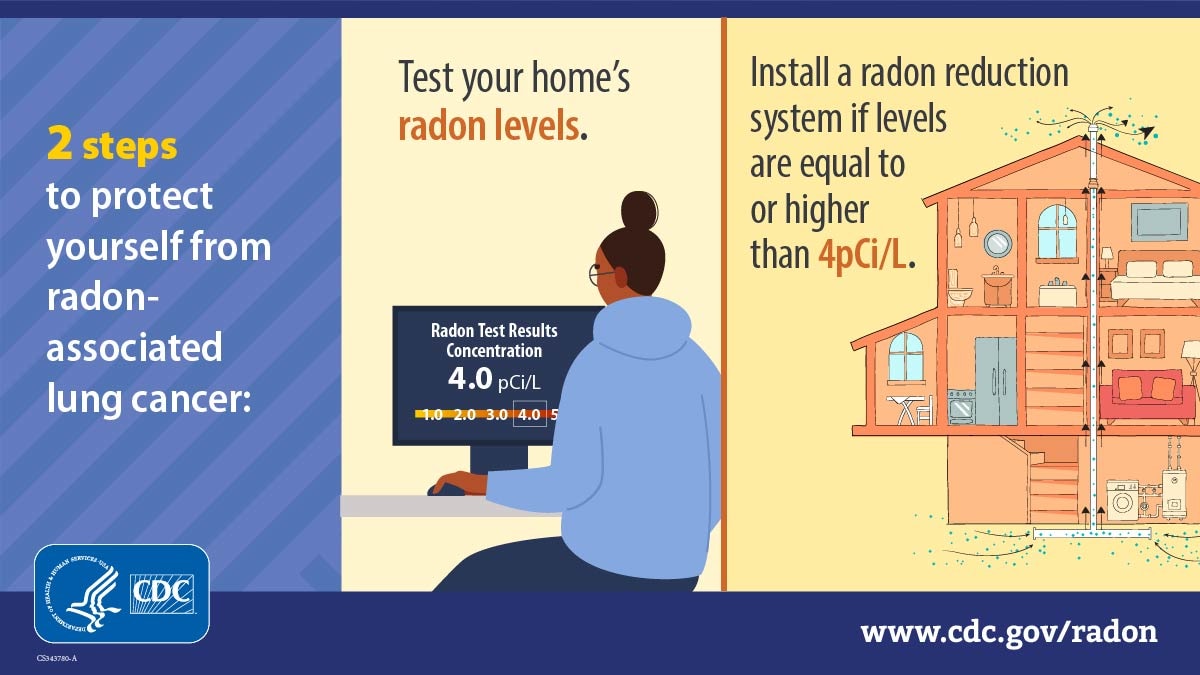
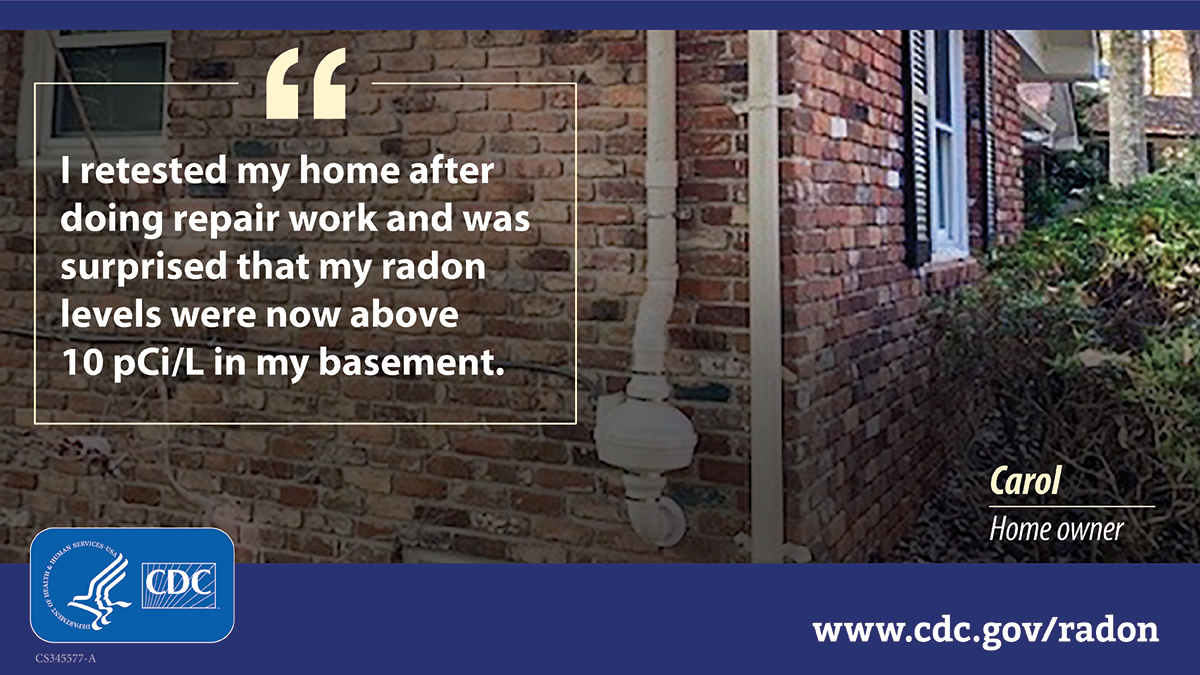
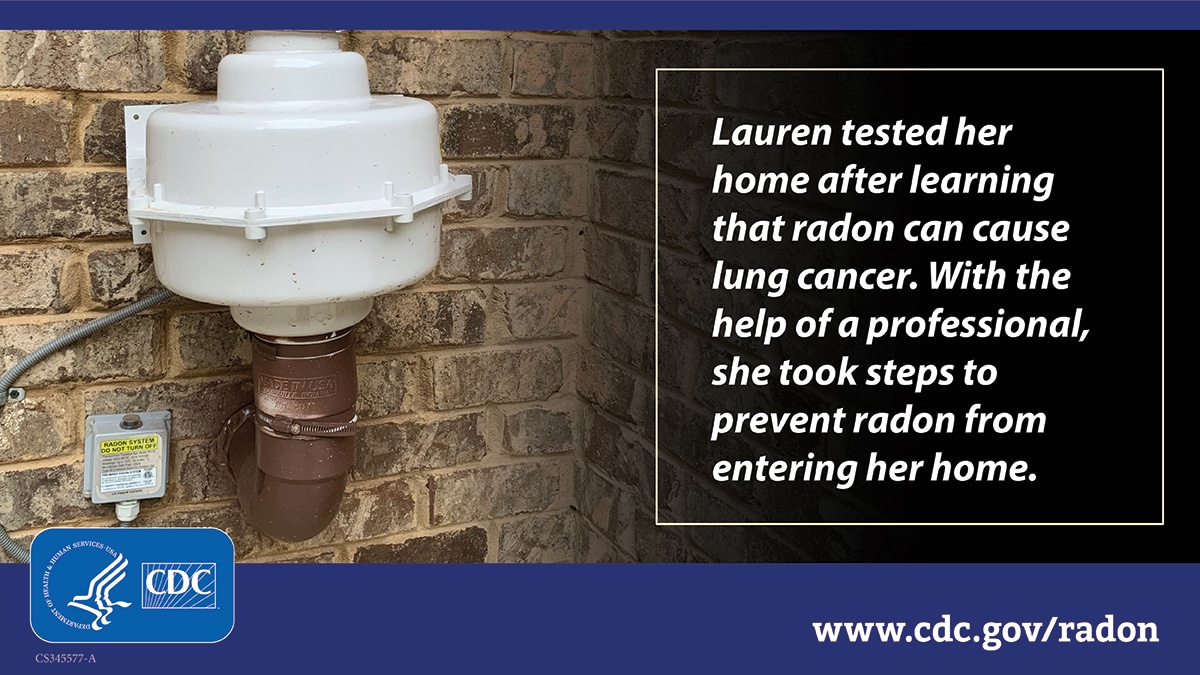
Why should I raise awareness about radon?
Facebook/Instagram:
Lung cancer deaths from radon exposure are preventable if more people take action to reduce radon levels in homes, building, and schools. Raising awareness about radon saves lives. https://bit.ly/4j4dI1I
X:
Lung cancer deaths from #radon exposure are preventable if more people take action to reduce radon levels in homes, buildings, and schools. Raising awareness about radon saves lives. https://bit.ly/4j4dI1I
Help raise awareness about #radon! CDC's website has information for healthcare providers and the public about radon testing and prevention. Visit: www.cdc.gov/radon.
Anyone can be exposed to lung cancer-causing levels of #radon. Katherine's long history of working on radon risk reduction and her experience as a health educator, give her a unique perspective on communicating about radon. Read Katherine's story: https://bit.ly/3Ds47kM.
Raising awareness about #radon saves lives. When Lauren learned that radon is the second leading cause of lung cancer, she took steps to test her home for radon and spread the word in her community. Read Lauren's story: https://bit.ly/3PaFDiL.
Radon is the second leading cause of lung cancer deaths in the U.S. after cigarette smoke. Dr. Mullett advocates for primary care visits to serve as key opportunities to educate patients about #radon. Read Dr. Mullett's story: https://bit.ly/49Rwh51

